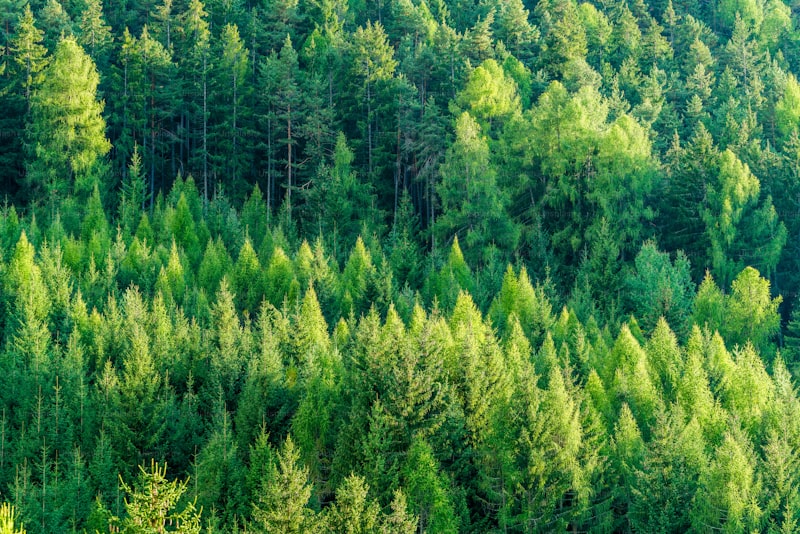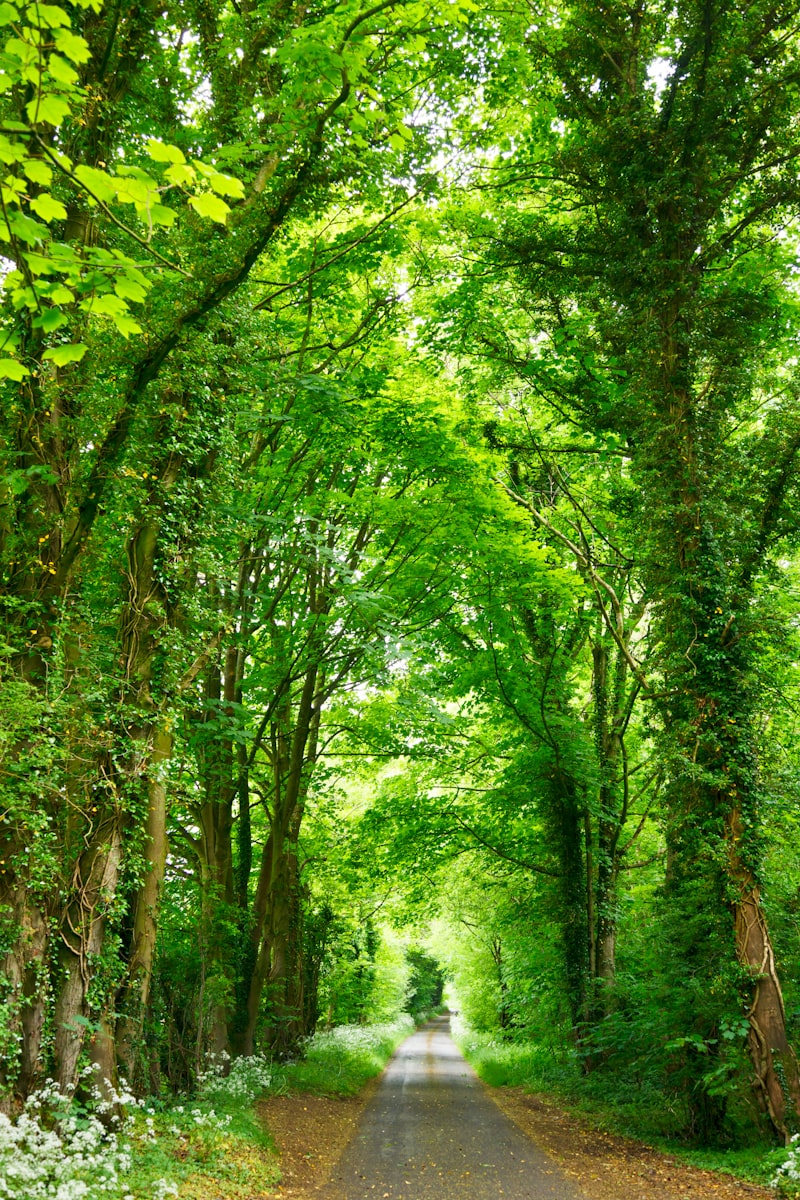The canopy of a forest is like its bustling metropolis, bustling with life and activity. It serves as a protective umbrella, shielding the layers below from harsh sunlight and rainfall, while also providing a haven for countless species of plants, animals, and insects. It’s a bustling hub of biodiversity, where each leaf, branch, and creature plays a crucial role in the ecosystem’s delicate balance.
One of the most remarkable features of a forest canopy is its ability to support an incredible variety of life forms. From tiny insects to majestic birds and elusive mammals, every inch of space is utilized in this vertical world. Trees compete for sunlight, stretching their branches towards the sky, creating a complex network of habitats and microclimates.
Moreover, the canopy acts as a natural air filter, absorbing carbon dioxide and releasing oxygen, thereby playing a vital role in mitigating climate change. It also helps regulate local temperatures, reducing heat through evapotranspiration and providing cool, shaded areas for both wildlife and humans alike.
Walking through a forest with a thriving canopy is an immersive experience. The sounds of rustling leaves, chirping birds, and buzzing insects create a symphony of life. Each step reveals new wonders, from delicate orchids clinging to branches to ancient ferns thriving in the humid air.
Secrets Unveiled: Exploring the Enchanting World of Natural Forest Canopies
Imagine standing beneath a towering cathedral of green, where sunlight filters through a kaleidoscope of leaves, creating patterns that dance on the forest floor. This uppermost layer of the forest, known as the canopy, forms a crucial habitat for myriad plant and animal species. It’s a bustling metropolis of biodiversity, where species from tiny insects to majestic birds find refuge and sustenance.
One of the most captivating aspects of forest canopies is their role in the global ecosystem. They act as a natural carbon sink, absorbing carbon dioxide from the atmosphere and producing oxygen essential for life on Earth. This intricate balance not only regulates our climate but also supports countless communities worldwide, providing resources and livelihoods.
But what makes exploring these lofty realms truly magical is the hidden world within. Epiphytic plants like orchids and bromeliads find their niche here, thriving on branches and trunks without needing soil. Creatures like monkeys, sloths, and rare birds navigate this aerial landscape with grace, adapted to a life high above the forest floor.
The enchantment of forest canopies extends beyond biology—it’s a place of wonder and discovery. Researchers harness canopy walkways and climbing techniques to study ecosystems otherwise inaccessible, unraveling mysteries that contribute to our understanding of biodiversity and conservation.
Above the Treetops: Discovering the Hidden Wonders of Natural Forest Canopies
Imagine standing at the edge of a vast forest, looking up towards the heavens where the treetops converge into a lush, green canopy. This is where nature’s magic truly unfolds – in the intricate web of branches, leaves, and life that thrives above us. The forest canopy isn’t just a ceiling of leaves; it’s a vibrant ecosystem teeming with biodiversity and secrets waiting to be discovered.
One of the most awe-inspiring aspects of the forest canopy is its sheer complexity. It’s not just a flat layer of leaves; it’s a three-dimensional world where each branch and leaf plays a crucial role. From the towering giants that form the emergent layer to the smaller, delicate ferns that cling to the branches, every part of the canopy has its own story to tell.
Exploring the canopy is like entering a different realm. It’s a vertical journey where each step reveals new wonders – from the vibrant colors of orchids and bromeliads that dot the branches to the intricate patterns of vines that weave their way upwards. It’s a place where creatures big and small find refuge and thrive, from the elusive canopy-dwelling birds to the tiny insects that call the leaves their home.
But beyond its beauty, the forest canopy plays a vital role in our planet’s health. It acts as a natural air filter, absorbing carbon dioxide and releasing oxygen, thereby contributing to the balance of our atmosphere. Moreover, it regulates temperatures below, creating a microclimate that supports diverse life forms.
Standing beneath the canopy, one can’t help but feel a sense of wonder and humility. It’s a reminder of nature’s resilience and creativity – how millions of years of evolution have shaped this intricate tapestry of life. Each visit to the canopy is a journey into the unknown, where discoveries await and mysteries unravel.
So next time you find yourself in the presence of a forest, take a moment to look up. Above the treetops lies a world of hidden wonders, waiting to be explored and cherished.
Nature’s Canopy: Where Beauty and Biodiversity Flourish
In the vast tapestry of our planet’s ecosystems, few are as enchanting and vital as the canopy of lush forests. This towering realm of greenery not only captivates the eye with its sheer beauty but also harbors an astonishing diversity of life. Imagine a world where each leaf and branch tells a story of resilience and interconnectedness.
High above the forest floor, the canopy serves as a bustling metropolis for countless species. Birds flit between branches, their vibrant plumage painting the sky with flashes of color. Sloths leisurely traverse the treetops, embodying a serene existence amidst the verdant chaos. Each creature plays a crucial role in the delicate balance that sustains the entire ecosystem.
But the canopy isn’t just a haven for animals; it’s also a powerhouse of biodiversity. Here, plants compete for sunlight in a ceaseless race towards the sky. Orchids drape themselves over branches like delicate jewels, while epiphytes cling to trunks, creating miniature gardens in the air. The interplay of light and life creates a symphony of textures and hues that defies imagination.
Beyond its visual splendor, the canopy performs invaluable services for our planet. Trees act as natural carbon sinks, absorbing CO2 and mitigating the effects of climate change. They also play a crucial role in regulating global temperatures and maintaining local weather patterns. Without these towering giants, the very fabric of our environment would be irreversibly altered.
Standing beneath the canopy, one can’t help but feel a sense of awe and wonder. It’s a reminder of nature’s resilience and the intricate web of life that sustains us all. As we continue to explore and appreciate these majestic forests, it becomes clear that protecting them is not just a matter of conservation but of safeguarding our own future.
Nature’s canopy is more than just a collection of trees; it’s a testament to the power and beauty of biodiversity. It reminds us that in the midst of chaos, there is always harmony waiting to be discovered. So, let us tread lightly and cherish this canopy of life, for it is a treasure worth protecting for generations to come.
In the Realm of Giants: Marveling at Natural Forest Canopies
These forest canopies are not just clusters of trees; they are entire ecosystems teeming with life. Birds flit among the leaves, their songs echoing through the dense foliage. Squirrels scamper along branches, agile and quick-footed in their arboreal homes. Each leaf, each twig, plays a part in this intricate tapestry of life, from the smallest insects to the largest mammals that call these forests home.
The sheer scale of these natural wonders is humbling. It’s as if nature has woven a cathedral out of greenery, a place where light filters through in dappled patterns, creating an ever-shifting mosaic of shadows and sunlit patches. Standing amidst such splendor, one can’t help but feel a deep sense of connection to the earth and its ancient rhythms.
But these canopies aren’t just places of beauty—they’re also vital to our planet’s health. They act as lungs for the Earth, absorbing carbon dioxide and releasing oxygen, helping to regulate our climate and provide habitats for countless species. Protecting these forests isn’t just about preserving their beauty; it’s about safeguarding the very lifeblood of our planet.
So next time you find yourself in the presence of these natural giants, take a moment to marvel at their majesty. Let yourself be swept away by the wonder of it all, and remember that in the realm of giants, nature’s beauty knows no bounds.
Elevated Ecosystems: The Ecological Importance of Forest Canopies
Nestled high above, these canopies form a unique habitat. They host a myriad of plant species, from epiphytes like orchids and ferns to towering trees that stretch towards the sun. This vertical layering allows for specialized niches that support diverse flora and fauna, often harboring species not found anywhere else in the forest.
Beyond biodiversity, forest canopies act as crucial carbon sinks. Trees here absorb carbon dioxide from the atmosphere during photosynthesis, storing it in their biomass. This process helps mitigate climate change by reducing greenhouse gas concentrations. In addition to carbon storage, canopy trees also regulate local and global climates by influencing humidity, rainfall patterns, and temperature moderation.
Moreover, these elevated ecosystems provide essential services to humans. They contribute to watershed protection by intercepting rainfall, reducing erosion, and maintaining water quality. Canopy cover also supports agronomic activities by influencing microclimates and soil fertility in adjacent areas.
Understanding the ecological importance of forest canopies underscores the urgency of their conservation. Despite their critical role, these upper layers are increasingly threatened by deforestation, climate change, and habitat fragmentation. Protecting and restoring canopy habitats not only preserves biodiversity but also ensures the resilience of our planet’s ecosystems in the face of environmental challenges.
A Bird’s-Eye View: Life in the Canopy of Natural Forests
In this aerial realm, sunlight filters through the dense foliage, creating a mesmerizing play of light and shadow. It’s a kaleidoscope of greens, where each leaf and branch competes for its place in the sun. Here, life unfolds in a vertical dimension, with plants climbing towards the light and animals navigating a labyrinth of branches.

One of the most remarkable aspects of life in the canopy is its diversity. From tiny insects to majestic birds and elusive mammals, the canopy hosts a myriad of species, each adapted to its unique niche. Birds flit among the branches, their colorful plumage contrasting with the verdant backdrop. Meanwhile, monkeys swing effortlessly, showcasing their acrobatic skills high above the forest floor.
The canopy isn’t just a home; it’s a strategic hub for survival. Plants deploy ingenious strategies to thrive in this competitive environment. Some epiphytic plants perch delicately on branches, absorbing nutrients from the air and rain. Others produce vibrant flowers, attracting pollinators that zip between the treetops.

Life in the canopy is a constant dance of survival and adaptation. Creatures must navigate not only the physical challenges of height and agility but also the intricate relationships within the ecosystem. Predators lurk, and prey camouflages itself among the leaves, creating a delicate balance that sustains the entire forest.
From an ecological standpoint, the canopy plays a crucial role in the health of the forest below. It regulates temperature, retains moisture, and houses species that contribute to nutrient cycling. In essence, it’s a bustling metropolis in the sky, interconnected with the forest floor and understory below.

The canopy of natural forests isn’t just a sight to behold; it’s a marvel of evolution and coexistence. From its dizzying heights to its hidden wonders, life thrives in this upper realm of the forest. Exploring its secrets reveals a world where every leaf tells a story, and every creature plays a vital role in the symphony of nature’s harmony.
Frequently Asked Questions
What are forest canopies and why are they important?
Learn about forest canopies, the uppermost layer of trees in a forest. Discover why they are crucial ecosystems, playing vital roles in biodiversity, climate regulation, and providing habitats for numerous plant and animal species. Understand their importance in scientific research and as natural carbon sinks.
What threats do forest canopies face today?
Learn about the current threats facing forest canopies today, including habitat fragmentation, deforestation, climate change impacts, and biodiversity loss.
How do forest canopies contribute to biodiversity?
Learn how forest canopies enhance biodiversity by providing unique habitats for diverse plant and animal species, fostering complex ecological interactions crucial for ecosystem health.
What are the main layers of a forest canopy?
Learn about the main layers of a forest canopy: the emergent layer where the tallest trees reach above the canopy, the canopy itself formed by intertwined branches and leaves, the understory with smaller trees and shrubs beneath the canopy, and the forest floor where smaller plants and decomposing matter thrive.
How does the canopy affect the climate beneath it?
The canopy of a forest significantly influences the climate below by moderating temperature extremes, reducing sunlight intensity, and maintaining higher humidity levels. It provides shade, regulates moisture, and supports diverse ecosystems.


